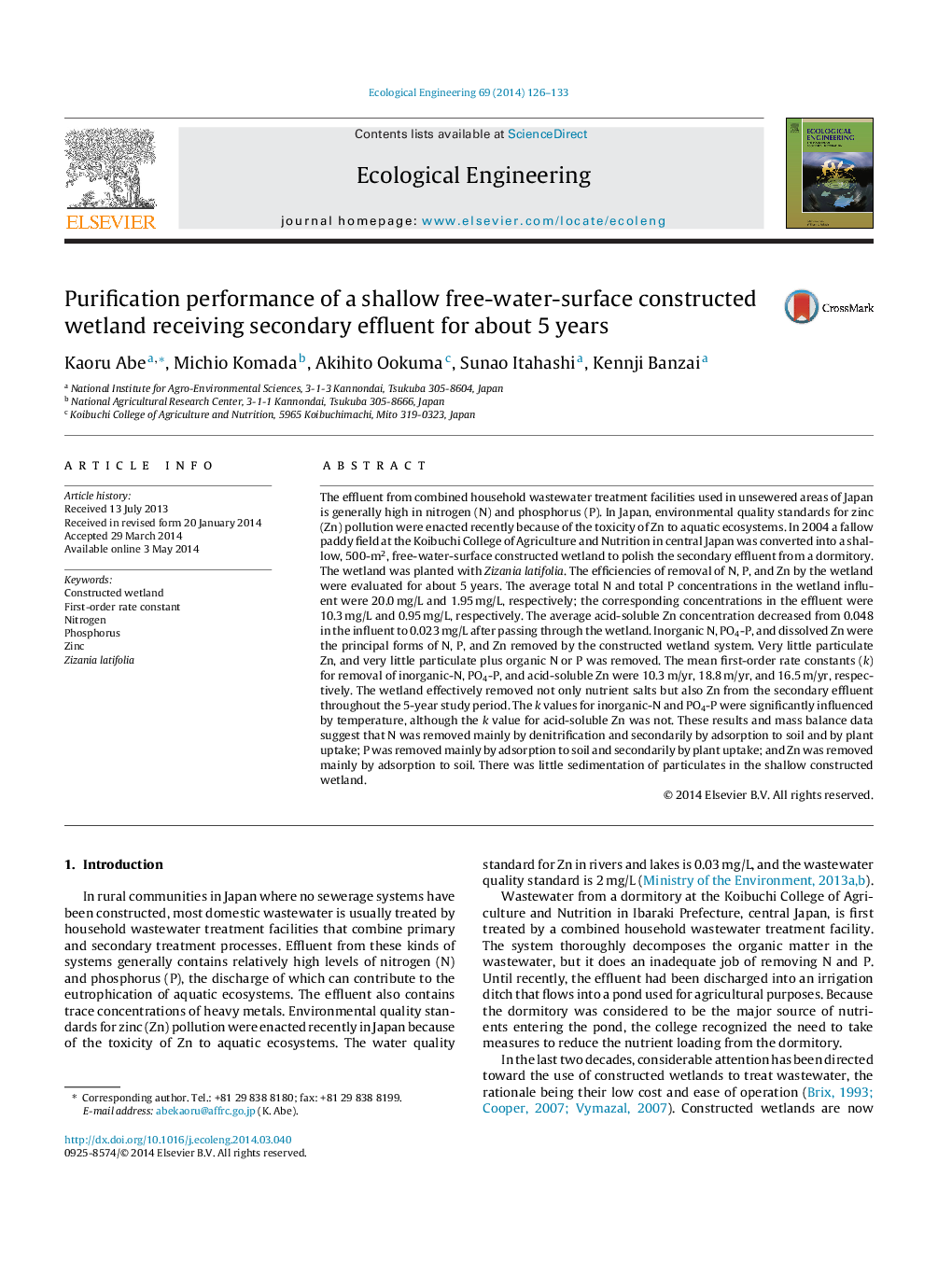| Article ID | Journal | Published Year | Pages | File Type |
|---|---|---|---|---|
| 4389382 | Ecological Engineering | 2014 | 8 Pages |
•A shallow, FWS constructed wetland converted from a paddy field was studied.•Soluble N, P, and Zn were removed but sedimentation of particulates did not proceed well.•The first-order removal rate constants were within the range of values reported.•The rate constant for Zn removal was not significantly influenced by temperature.•Main removal processes were denitrification (N) and adsorption to soil (P and Zn).
The effluent from combined household wastewater treatment facilities used in unsewered areas of Japan is generally high in nitrogen (N) and phosphorus (P). In Japan, environmental quality standards for zinc (Zn) pollution were enacted recently because of the toxicity of Zn to aquatic ecosystems. In 2004 a fallow paddy field at the Koibuchi College of Agriculture and Nutrition in central Japan was converted into a shallow, 500-m2, free-water-surface constructed wetland to polish the secondary effluent from a dormitory. The wetland was planted with Zizania latifolia. The efficiencies of removal of N, P, and Zn by the wetland were evaluated for about 5 years. The average total N and total P concentrations in the wetland influent were 20.0 mg/L and 1.95 mg/L, respectively; the corresponding concentrations in the effluent were 10.3 mg/L and 0.95 mg/L, respectively. The average acid-soluble Zn concentration decreased from 0.048 in the influent to 0.023 mg/L after passing through the wetland. Inorganic N, PO4-P, and dissolved Zn were the principal forms of N, P, and Zn removed by the constructed wetland system. Very little particulate Zn, and very little particulate plus organic N or P was removed. The mean first-order rate constants (k) for removal of inorganic-N, PO4-P, and acid-soluble Zn were 10.3 m/yr, 18.8 m/yr, and 16.5 m/yr, respectively. The wetland effectively removed not only nutrient salts but also Zn from the secondary effluent throughout the 5-year study period. The k values for inorganic-N and PO4-P were significantly influenced by temperature, although the k value for acid-soluble Zn was not. These results and mass balance data suggest that N was removed mainly by denitrification and secondarily by adsorption to soil and by plant uptake; P was removed mainly by adsorption to soil and secondarily by plant uptake; and Zn was removed mainly by adsorption to soil. There was little sedimentation of particulates in the shallow constructed wetland.
